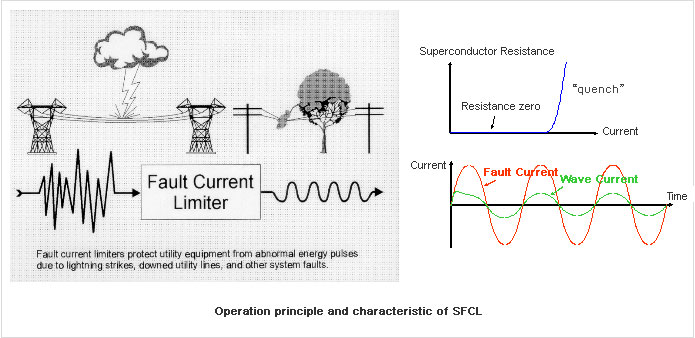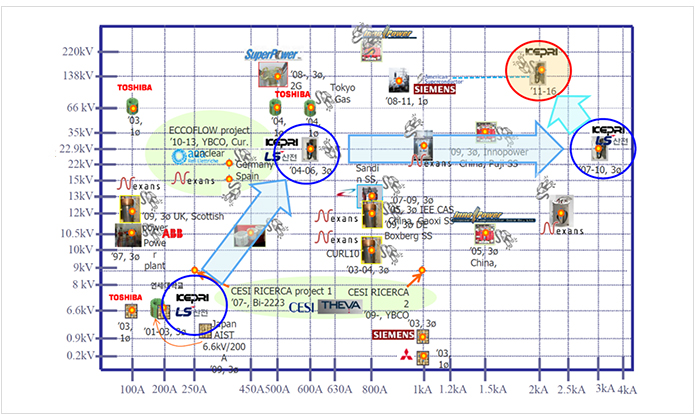
- >
- Superconductivity
- >
- Superconductivity Application Technologies
- >
- Superconducting Fault Current Limiter (SFCL)
Superconducting Fault Current Limiter (SFCL)
SFCL is a new power device to automatically limit a fault current to a safe level with the superconducting property.
When superconductor is cooled down to critical temperature (about -186℃) or less, the resistance becomes zero. However, superconductor looses superconductivity and resistance occurs rapidly (quench), when excessive current flows and exceeds certain value (critical current). SFCL device uses this property.
Operation Principle
Superconductor looses superconductivity and resistance occurs rapidly (quench), when excessive current flows and exceeds certain value (critical current).
SFCL Characteristics
-Not affect the existing power network because it has no impedance during normal operation
-Fault current limitation within 1/2 cycle
-Return to normal operation by recovering superconductivity within 0.5 seconds
Fault current is suppressed
Fault current is the largest problem in electric power system operation in Korea due to limited land, high-density load concentration in capital city area, etc. In addition, fault current increases are expected because of introduction of the smart grid and system link for large capacity of power distribution.
In order to suppress the fault current, bus isolation, distribution of normal-conducting fault current limiters, opening of lines, replacement of a large circuit breaker, etc are performed. Due to implementation of these protections, fault current remains below of breaking capacity. Instead the degradations of grid stability and supply reliability are occurred.
Current measures are not enough since the fault current continues to rise in the future. When SFCL is applied, the fault current is suppressed without bus separation or line opening so system stability/supply reliability can be dramatically improved.
Stability and supply reliability are occurred
In order to suppress the fault current, bus isolation, distribution of normal-conducting fault current limiters, opening of lines, replacement of a large circuit breaker, etc are performed. Due to implementation of these protections, fault current remains below of breaking capacity. Instead the degradations of grid stability and supply reliability are occurred.
System stability/supply reliability can be dramatically improved
Current measures are not enough since the fault current continues to rise in the future. When SFCL is applied, the fault current is suppressed without bus separation or line opening so system stability/supply reliability can be dramatically improved.
| Development Trends and their Levels |

